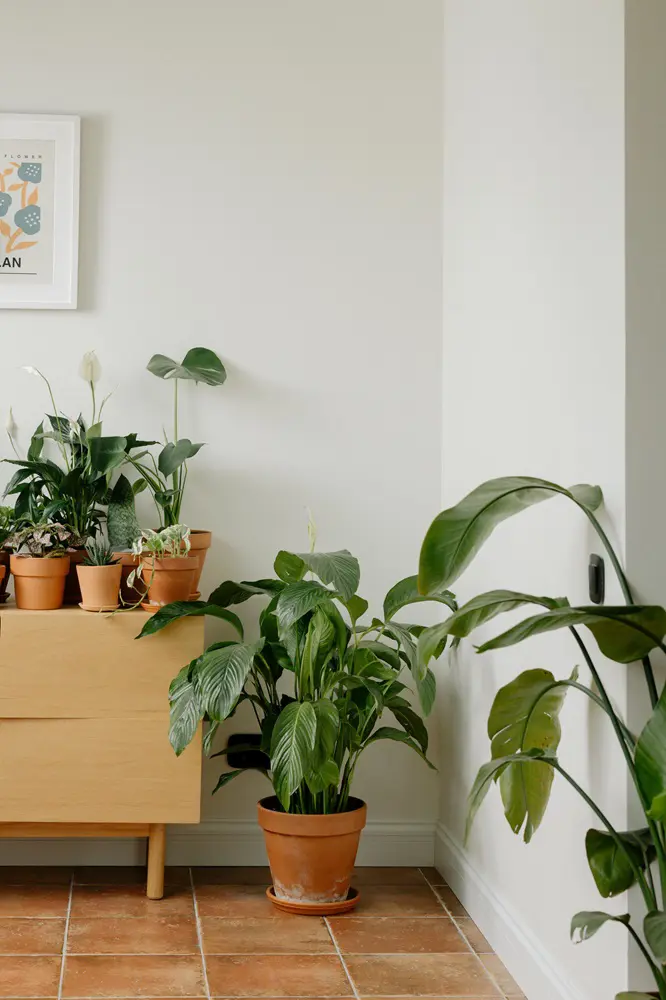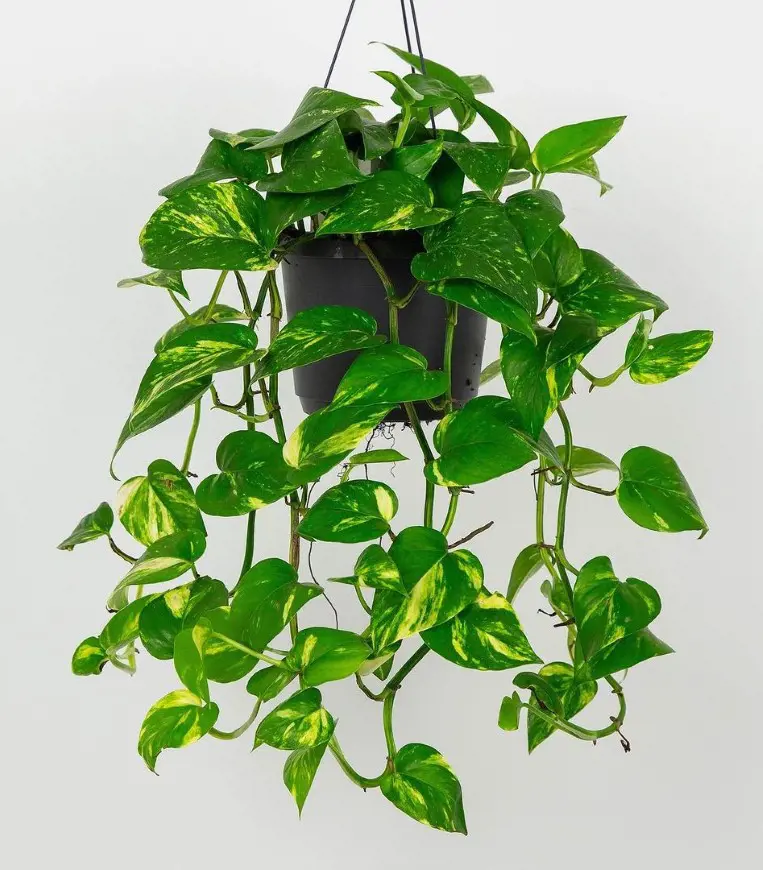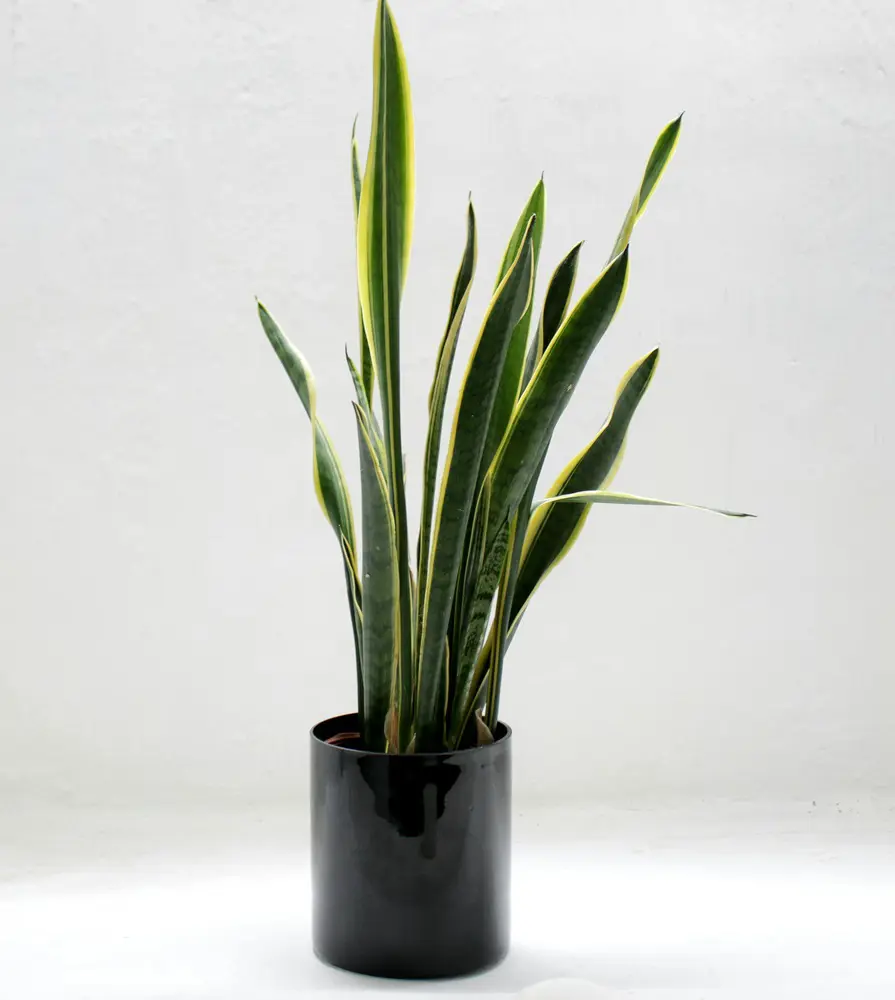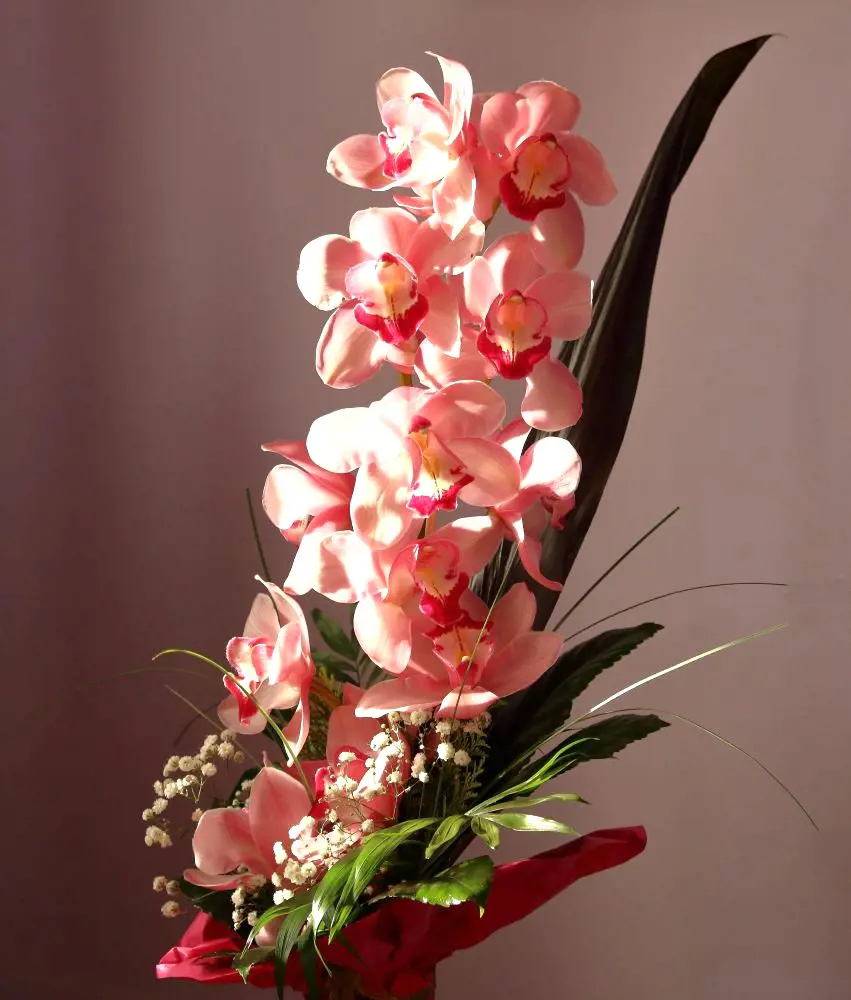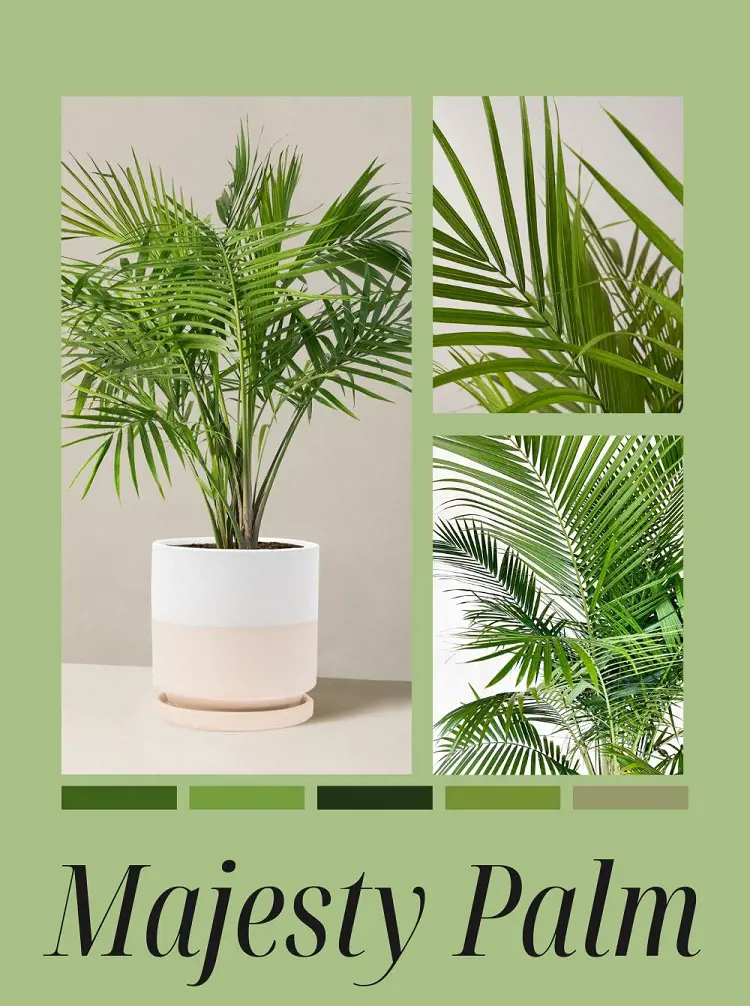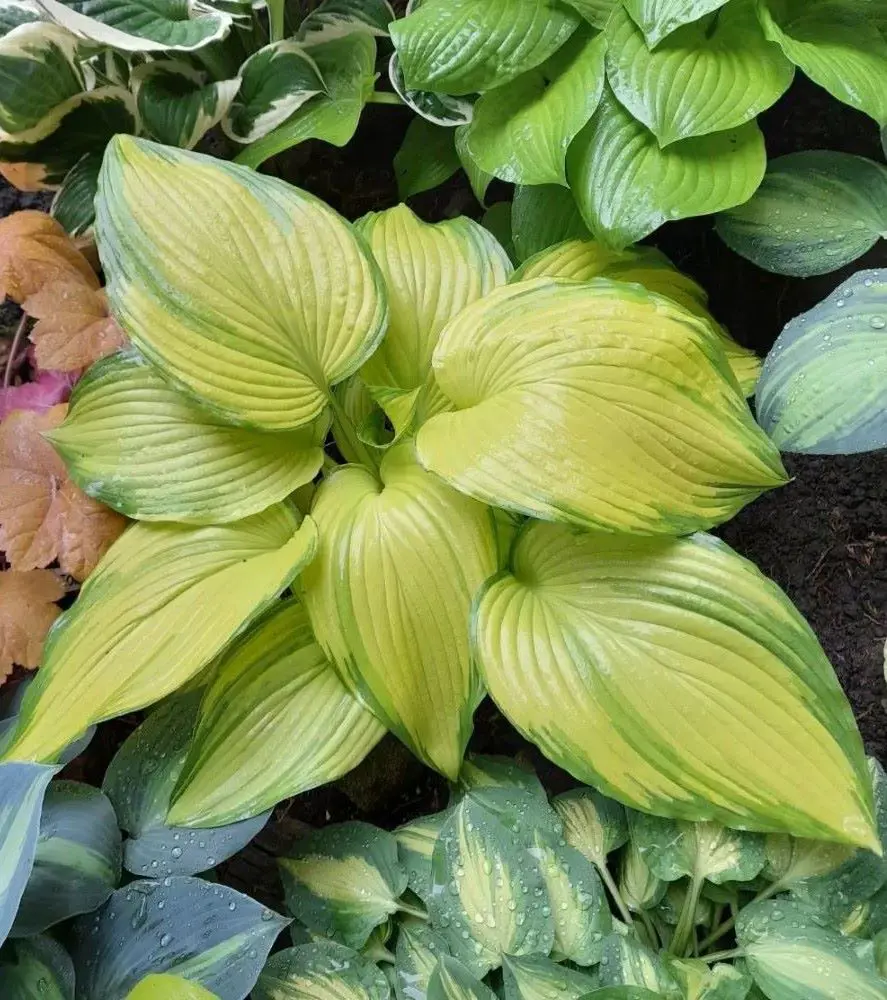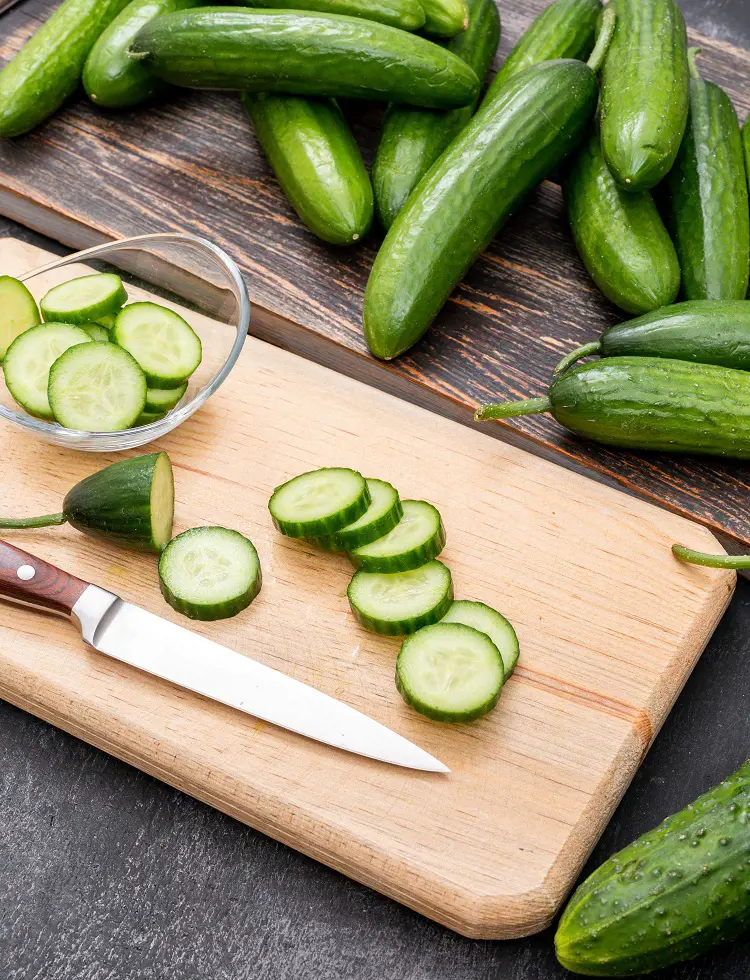An Easy Guide To Grow And Care For Dragon Tree
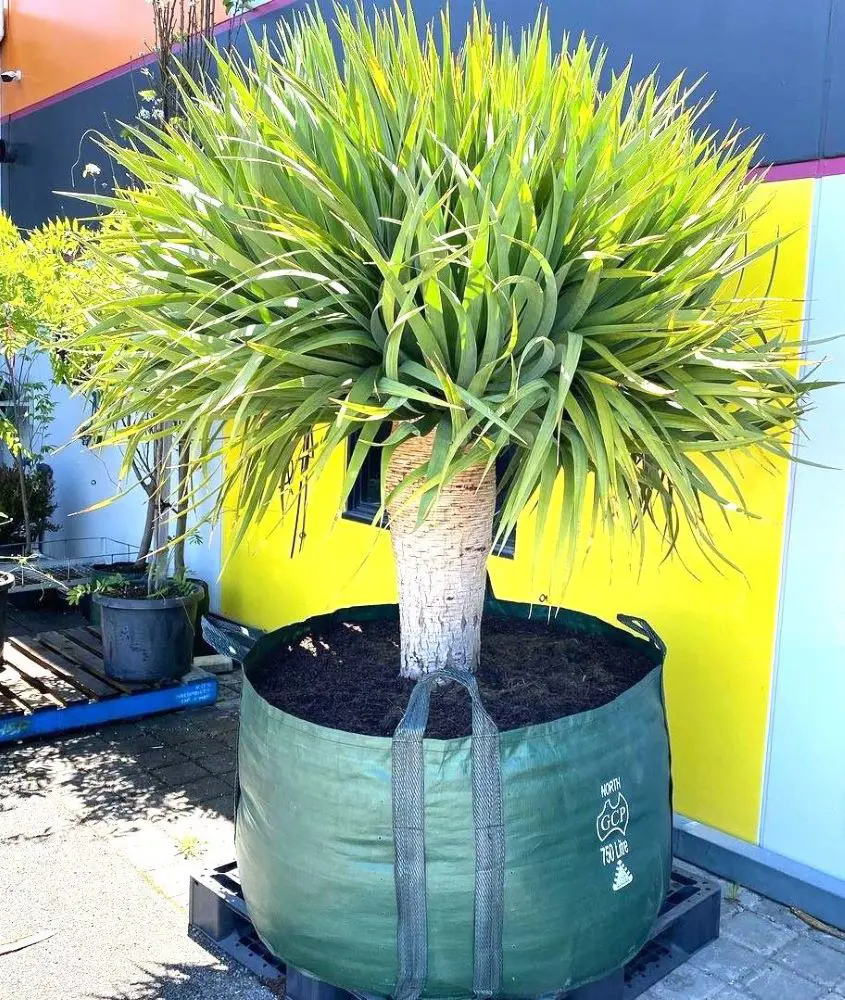
This post may contain affiliate links. If you make a purchase through links on our site, we may earn a commission.
Dragon trees are relatively easy to grow and care for, making them ideal for beginners or those with busy lifestyles. Their unique appearance can enhance the visual appeal of any room. Like many indoor plants, they are known for their air-purifying properties.
Dragon trees have striking, architectural foliage with long, slender leaves that add a touch of elegance and tropical flair to indoor spaces. So, let us learn in detail; how to care for dragon trees.
Dragon Tree Overview
| Botanical Name | Dracaena marginata |
| Common Names | Dragon tree, dragon plant, Madagascar dragon tree |
| Family | Asparagaceae |
| Type | Broadleaf evergreen |
| Size | 15–20 ft. tall, 3–10 ft. wide |
| Sunlight Requirement | Full sun, partial shade |
| Soil Type/pH | Loamy, well-drained/Neutral to acidic |
| USDA Growing Zone | Zones 10–12 |
| Native Areas | Madagascar |
| Toxicity | Toxic to dogs, toxic to cats |
What Is A Dragon Tree?
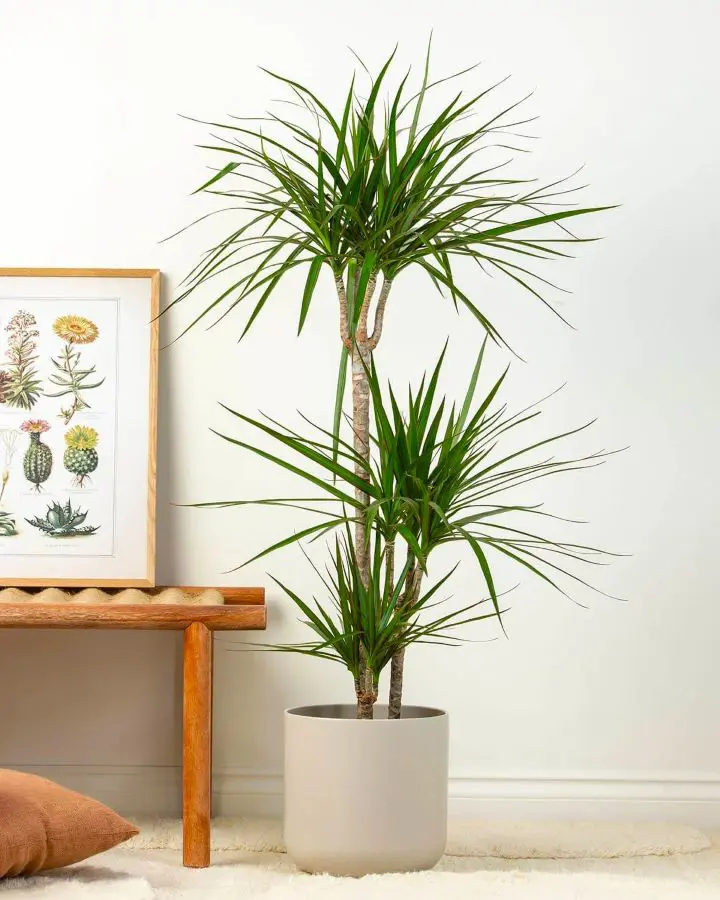
The Dragon Tree is a distinctive and slow-growing evergreen tree native to the Canary Islands, Cape Verde, Madeira, and Morocco. It's characterized by its thick trunk, which often has a unique, umbrella-shaped canopy of long, sword-like leaves clustered at the top. The tree produces small, fragrant, white flowers followed by orange-red berries.
While it can be grown outdoors in suitable climates, where it can reach heights of up to 60 feet (18 meters), the dragon tree is more commonly cultivated as an indoor plant in cooler regions.
This low-light indoor plant is believed to have mystical and healing properties. It has been associated with various legends and folklore, earning its name due to the red resin that exudes from its trunk when cut, resembling a dragon's blood. Additionally, it holds religious significance in some cultures, where it's considered a sacred or auspicious tree.
Dragon Tree Care
Dragon tree plant is a popular indoor plant appreciated for its striking appearance and relatively low maintenance requirements. While they're generally considered easy to care for, they do benefit from specific attention to thrive. Here are some detailed care tips:
Light
These plants prefer bright, indirect light but can tolerate lower light conditions. Avoid placing them in direct sunlight, as it can scorch their leaves. Rotate the plant occasionally to ensure even growth and prevent leaning towards the light source.
Watering
Dragon trees are sensitive to overwatering, so it's essential to let the top inch of soil dry out between waterings. Water thoroughly when the soil feels dry to the touch, but make sure excess water drains away to prevent root rot. Reduce watering during the winter months when the plant's growth slows down.
Soil
Use a well-draining potting mix that's rich in organic matter. A mix of peat moss, perlite, and compost works well for dragon trees. Repot the plant every two to three years to refresh the soil and provide room for growth.
Temperature
Dracaena dragons prefer moderate temperatures ranging between 65°F and 80°F (18°C and 27°C). Avoid exposing them to sudden temperature drops or drafts, which can cause stress and leaf drops. During winter, it's crucial to keep them away from cold drafts near windows or doors.
Humidity
While dragon trees can tolerate average indoor humidity levels, they appreciate slightly higher humidity. Aim for humidity levels between 40% and 60%. You can increase humidity by misting the leaves regularly or placing the plant on a pebble tray filled with water. Avoid placing the plant near heaters or air conditioners, as they can cause the air to dry.
Fertilizing
Feed your dragon tree with a balanced liquid fertilizer diluted to half-strength every month during the growing season (spring and summer). Reduce fertilization during the fall and winter when the plant's growth slows.
Pruning
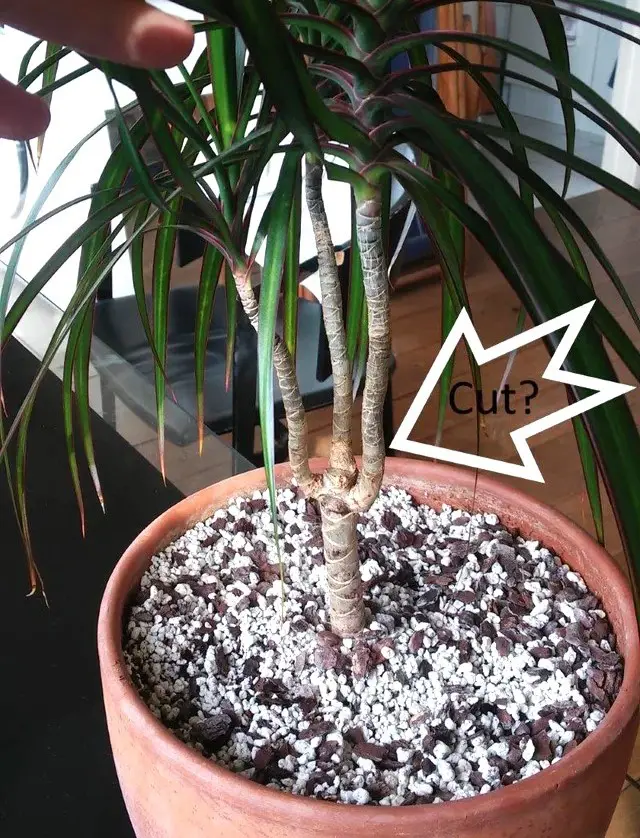
Pruning is an essential aspect of caring for a dragon tree, helping to maintain its shape, promote healthy growth, and remove dead or damaged foliage. It is normal for dragon trees to shed leaves, especially older or lower leaves. This shedding is a natural process as the plant grows, and it often occurs when new growth emerges, so it is best to discard them.
The best time to prune a dragon tree is in the spring or early summer when it's actively growing. Avoid pruning during the fall and winter months, when the plant's growth slows down.
Tools required
- Choose clean, sharp pruning tools to make clean cuts without crushing the plant tissue.
- Wear gloves to protect your hands from the sharp edges of the leaves and any potential irritants.
Before and after pruning, sterilize your pruning tools with rubbing alcohol or a diluted bleach solution to prevent the spread of diseases.
Pruning Process
- Begin by carefully inspecting the dragon tree for any dead, yellowing, or damaged leaves.
- Select the leaves or stems you want to prune. Focus on removing dead, yellow, or diseased leaves first, followed by any leggy or overcrowded growth.
- Use your pruning shears or sharp scissors to make clean cuts just above the node or joint where the leaf or stem meets the main trunk or branch.
- Remove the pruned leaves and stems from the plant and dispose of them properly.
After pruning, monitor the dragon tree closely for any signs of stress or new growth. Provide appropriate care, including proper watering, lighting, and humidity, to support the plant's recovery and promote healthy growth.
Propagating Dragon Tree
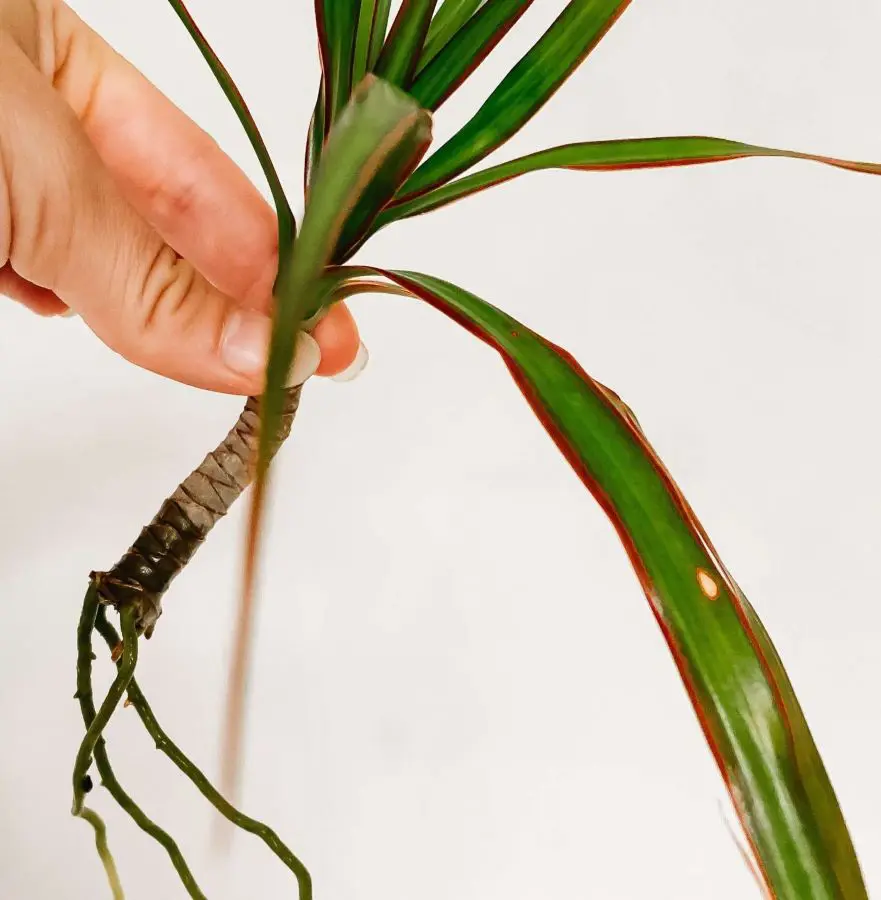
The Dragon tree plant can be propagated relatively easily, especially through stem cuttings. It is one of the most popular methods for propagating. With the right care and conditions, stem cuttings typically root and grow into new plants successfully.
Other methods, such as air layering and division, are also possible but may require more effort or expertise. Overall, propagating dragon trees, especially through stem cuttings, is considered an accessible and manageable process for most plant enthusiasts.
The best time to propagate dragon trees through stem cuttings is during the active growing season, which typically occurs in spring or early summer. This is when the plant is producing new growth and is most receptive to root formation.
Propagation By Cutting Steps:
- Select a healthy stem cutting, about 4-6 inches long.
- Remove the lower leaves, leaving a few at the top.
- Optionally, dip the cut end in the rooting hormone.
- Plant the cutting in a well-draining potting mix.
- Place it in a warm, bright location with indirect sunlight.
- Keep the potting mix moist but not waterlogged.
- Monitor for root development over 2–3 months.
- Transplant into a larger container once roots develop.
Propagation By Seed Method:
While it's technically possible to grow Dracaena from seeds, it's not the most common or practical method of propagation. Germinating Dracaena seeds can be challenging and time-consuming, as they require specific conditions to successfully sprout, including warmth, humidity, and patience. This method is generally less reliable and slower. To propagate by seeds,
- Start by obtaining fresh seeds and planting them in a well-draining potting mix.
- Keep the soil consistently moist, and provide warmth and indirect sunlight.
- Germination can take several weeks or months.
- Once the seeds sprout and develop into seedlings, provide proper watering, light, and humidity.
Division Method
Propagating a dragon tree through division involves separating a mature plant into smaller sections, each with its stems and roots. This method allows you to create new plants from an existing mature specimen. Carefully remove the plant from its pot or ground, exposing the root system.
- Identify natural divisions or sections where stems are connected to the root ball.
- Use clean tools to divide the plant into sections and plant each section in its pot with well-draining soil.
- Water thoroughly and provide proper care to encourage new growth and root development.
- Divisions can be transplanted into larger containers or the ground once established.
Potting and Repotting
Dracaena dragon plant requires a container with drainage holes to prevent waterlogging. When potting, use a well-draining potting mix, such as a blend of peat moss, perlite, and compost. Ensure the pot is large enough to accommodate the plant's root system comfortably, leaving some space for growth.
Plant the dragon tree at the same depth as it was previously growing, and gently firm the soil around the roots. Water thoroughly after potting to settle the soil.
These tall indoor plants can typically stay in one container for several years without issues, especially if they are provided with proper care. However, as the plant grows, it may eventually outgrow its container and require repotting to provide more room for root growth and stability. Repotting every 2-3 years is generally sufficient for dragon trees.
Spring is the best time for repotting, as the plant is entering its active growing season. When repotting,
- Choose a container that is one size larger than the current one.
- Carefully remove the plant from its pot.
- Gently tease out any circling roots, and plant it in fresh potting mix.
- Water thoroughly after repotting to help the plant establish itself in its new container.
Common Pests & Plant Diseases
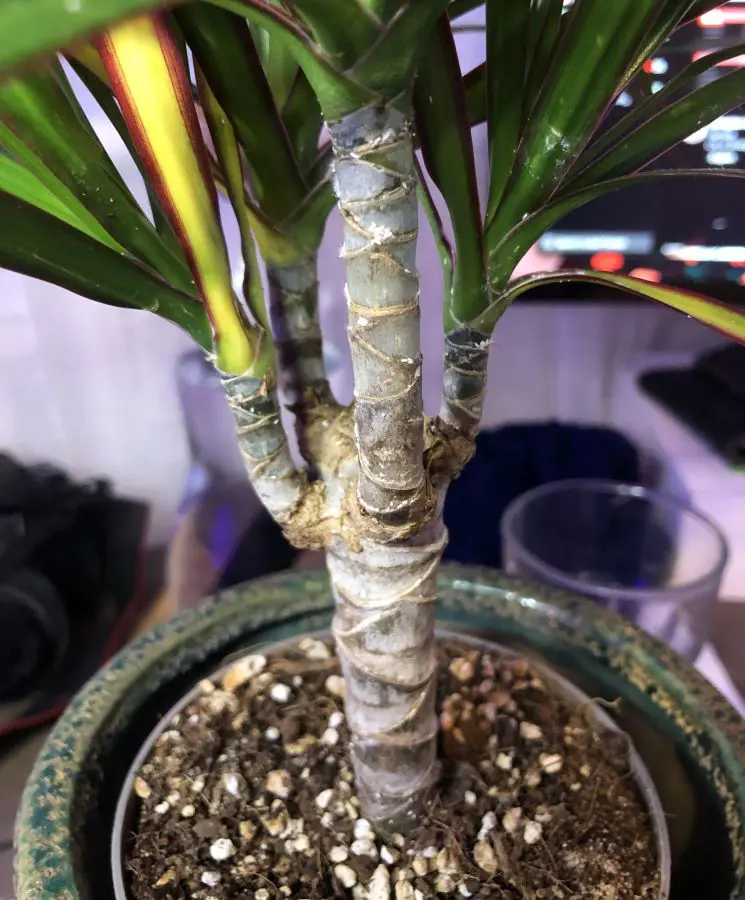
Dracaena marginata plants are generally easy-going houseplants, but they can still be susceptible to some common pests and diseases. Here are some of the most frequent offenders:
Pests
- Spider mites: These tiny arachnids suck the sap from leaves, leaving behind fine webbing and causing stippling and yellowing.
- Mealybugs: These white, cottony insects cluster on leaves and stems, feeding on plant sap and causing stunted growth and yellowing.
- Scale insects: These small, armored insects attach themselves to leaves and stems, causing yellowing, distorted growth, and sticky honeydew secretions.
- Thrips: They are tiny, slender insects that feed on leaves, causing silvery streaks and distorted growth.
- Fungus gnats: While not directly harmful to the plant, their presence can indicate overwatering and attract other pests.
Diseases
- Root rot: This fungal disease thrives in overwatered soil, causing root decay and wilting leaves.
- Leaf spot: Fungal or bacterial leaf spot causes brown, yellow, or black spots on leaves, eventually leading to leaf drop.
- Botrytis blight: This fungal disease thrives in humid environments and causes gray mold to grow on leaves and stems.
- Southern blight: This fungal disease causes sudden wilting and stem cankers at the base of the plant.
Prevention and Treatment
- Regularly check your dragon tree for signs of pests and diseases.
- Ensure proper watering, drainage, and light to avoid creating a favorable environment for pests and diseases.
- Isolate new plants for a while before introducing them to your existing collection.
- For minor infestations, try insecticidal soap, neem oil, or horticultural oil sprays.
- For severe infestations, consult a nursery or garden center for appropriate fungicides or insecticides.
Winter Care
Dragon trees, particularly popular indoor varieties like Dracaena marginata, Dracaena fragrans, and Dracaena reflexa, are not frost-tolerant and sensitive to cold temperatures. They thrive in temperatures between 65°F and 80°F (18°C to 27°C) and prefer consistent warmth.
For indoor dragon trees, winter care primarily involves maintaining stable indoor temperatures and avoiding exposure to cold drafts from windows, doors, or heating vents.
Outdoor dragon trees may require additional protection during the winter months. In regions where temperatures drop below their tolerance level, it's essential to bring outdoor dragon trees indoors or provide adequate frost protection, such as covering them with frost cloth or moving them to a sheltered location. Additionally, outdoor dragon trees may require less frequent watering during the winter as their growth slows down in cooler temperatures.
Dragon Tree Types
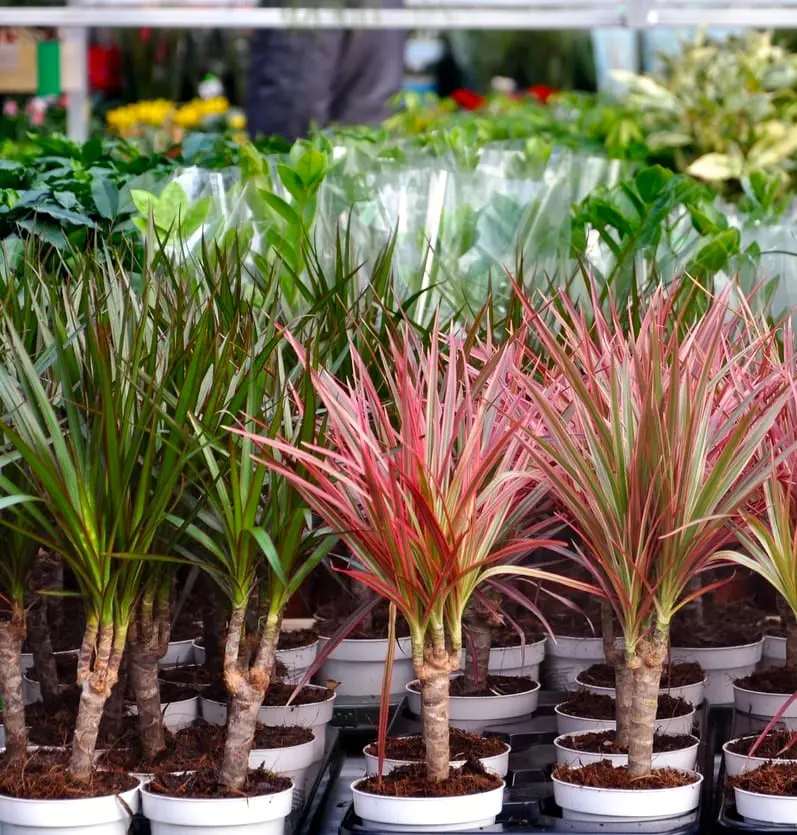
While Dracaena marginata, commonly known as the Madagascar dragon tree, is one of the most popular varieties found in plant stores and homes, there are several other common types of dragon trees worth mentioning:
Dracaena fragrans (Corn Plant)
This variety features long, sword-shaped leaves with a striking green and yellow variegation. It's known for its tolerance to low-light conditions, making it a popular choice for indoor spaces with limited sunlight. Learn more about how to care for corn plants.
Dracaena deremensis (Janet Craig)
The Janet Craig variety has glossy, dark green leaves that are narrower compared to other dragon tree varieties. It's prized for its ease of care and adaptability to various indoor environments.
Dracaena marginata 'Tricolor' (Rainbow Madagascar Dragon Tree)
This variety is a cultivar of the Madagascar dragon tree, featuring striking foliage with green, pink, and cream-colored stripes. It's prized for its vibrant colors and adds a bold statement to any indoor space.
Dracaena reflexa (Song of India)
This variety is characterized by its vibrant, variegated foliage, with yellow or cream-colored stripes running along the length of the leaves. It adds a pop of color to indoor spaces and is relatively low-maintenance.
Challenges With Dragon Tree
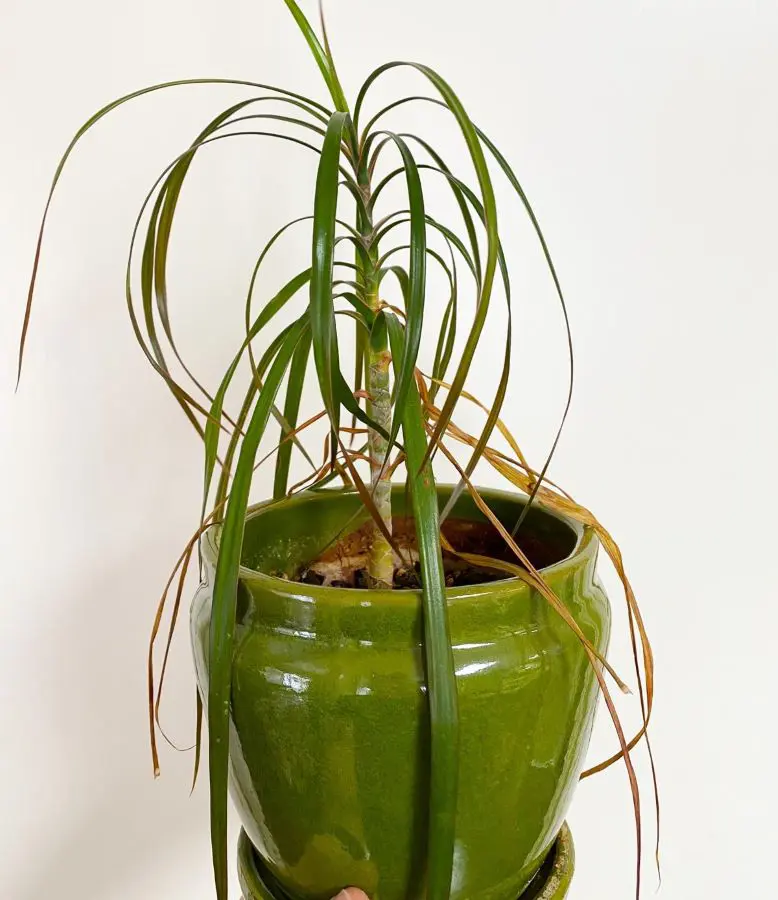
Dracaena marginata is generally resilient, but like any plant, it can encounter various problems. Here are some common ones, besides pests and diseases:
Drooping or limp leaves
- Possible causes: underwatering, overwatering, root rot, drafts, or temperature stress.
- Solution: Check soil moisture and adjust watering accordingly. If overwatered, ensure good drainage and repot if necessary. For root rot, remove infected roots and repot them in fresh soil. Eliminate drafts and adjust the temperature to between 65 and 80°F (18 and 27°C).
Yellowing leaves
- Possible causes: overwatering, nutrient deficiency, root rot, or sunlight issues.
- Solution: Check soil moisture and adjust watering. Fertilize with a balanced fertilizer. Check for root rot and repot if necessary. Provide bright, indirect sunlight and avoid direct midday sun.
Brown leaf tips
- Possible causes: low humidity, dry air, mineral deficiencies, or fluoride buildup.
- Solution: Increase humidity with a humidifier or pebble tray. Group plants together to create a microclimate. Use filtered water or rainwater to avoid fluoride buildup. Fertilize with a balanced fertilizer according to package instructions.
Brown spots on leaves
- Possible causes: fungal leaf spots, bacterial leaf spots, or sunburn.
- Solution: Remove infected leaves and improve air circulation. Avoid overwatering and wet foliage. Use fungicide or bactericide if necessary. Move the plant away from direct sunlight if sunburn is suspected.
Stunted growth
- Possible causes: nutrient deficiency, inadequate light, or pot-bound roots.
- Solution: Fertilize with a balanced fertilizer according to package instructions. Provide bright, indirect sunlight. Repot in a larger pot with fresh potting mix if the roots are pot-bound.
Recent posts
Plant Care
Plant Care
How To Grow and Care For Peace Lily Plant
The Peace Lily is an indoor plant that is most valued for its beautiful and shiny green leaves as well as the white blooms. Hard and tolerant, it’s naturally a low-maintenance addition to your plant collection. If you are confused, let us tell ...
Plant Care
Pothos Plant Care And Growing Guide
Adding a Pothos plant (Devil’s Ivy) to your home benefits the environment and aesthetic of your personal space. It's easy to maintain and is loved for it's ability to enhance indoor air quality by removing toxins like formaldehyde, benzene, and...
Plant Care
Snake Plant Care and Growing Guide
Snake plants require low maintenance, and low light and are almost impossible to kill, making them a perfect plant for beginners and seasoned gardeners. In this guide, we will explore essential care tips and optimal growing conditions for snake plant...
Plant Care
Orchid Plants Care: 11 Tips And Tricks You Should Follow
If you love gorgeous orchids but are worried they're too high-maintenance, don't worry. This guide is like a cheat sheet for orchid newbies. Forget fancy words and confusing schedules—we're talking about 11 easy tips to keep your orchid happy a...
Plant Care
How To Plant, Grow and Care Majesty Palm
The majestic palm, scientifically known as Ravenea rivularis, makes for a stunning indoor tree with its lush and grand fronds. Originating from Madagascar's river banks, this resilient houseplant is cherished not only for its beauty but also for its ...
Plant Care
How To Grow And Care For A Hosta Plant
Hosta plants are widespread perennials, often grown for their beautiful and diverse foliage. They are extremely easy to care for and can thrive in various conditions, particularly shade or semi-shade. These hardy plants can last for many years and re...
